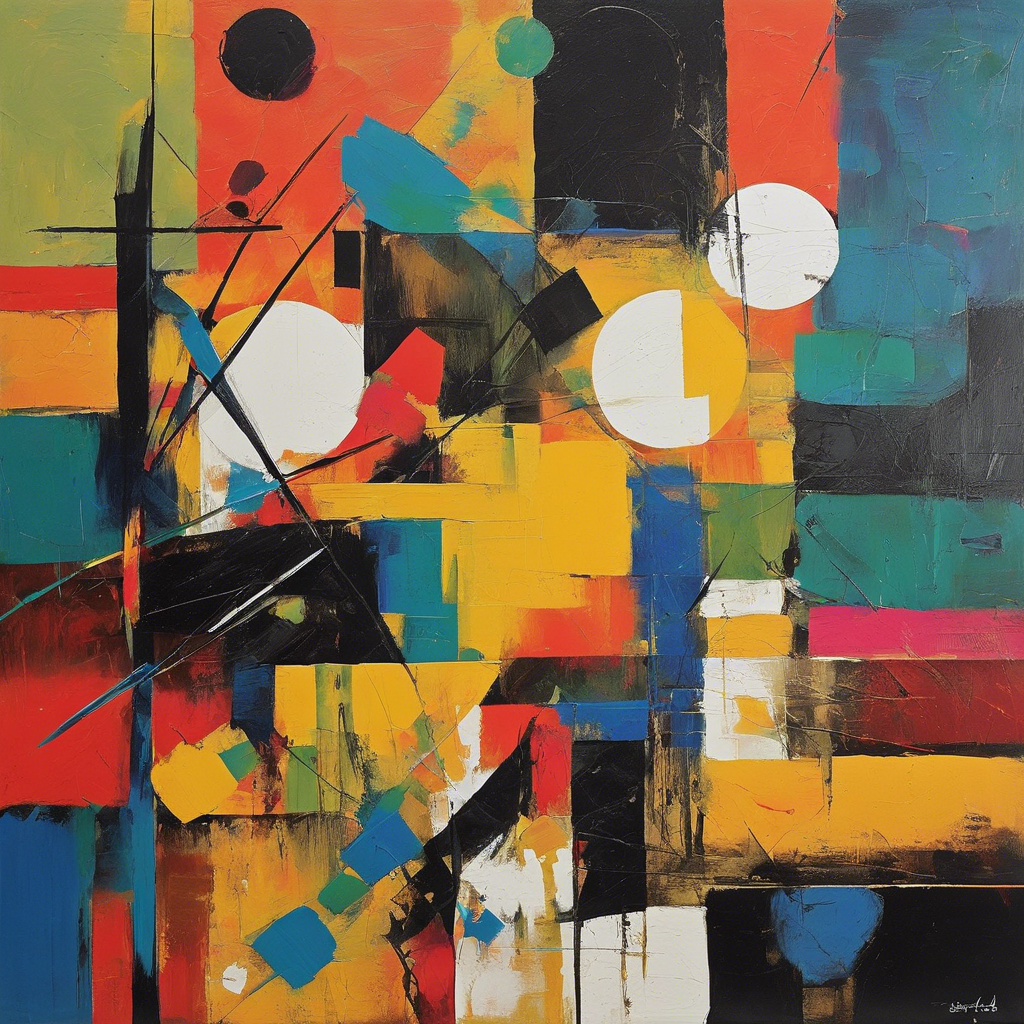Abstract expressionism, a movement that flourished in the 1940s and 1950s, primarily in the United States, presented a dramatic shift away from representational art. This style, often termed “non-objective” or “non-representational,” might seem like a random outburst of colors, shapes, and lines to the uninitiated. However, there is a profound language and depth to this artistic style that, once decoded, offers a richer understanding of the human emotional landscape.
The roots of abstract expressionism can be traced back to the post-World War II era, a time when artists sought to explore the depths of human emotion and the subconscious mind. Pioneered by artists like Jackson Pollock, Mark Rothko, and Willem de Kooning, this movement broke free from the constraints of traditional art, embracing spontaneity, improvisation, and a bold use of color and form.
Pollock’s iconic drip paintings, for example, appear as chaotic splatters at first glance. However, a closer look reveals a complex interplay of lines and colors, creating a sense of movement and energy that reflects the artist’s emotional state. Similarly, Rothko’s color field paintings, often featuring large blocks of vibrant hues, invite viewers to immerse themselves in a pure emotional experience, where color becomes a vehicle for conveying deep sentiments.
The power of non-representational art lies in its ability to bypass the literal and appeal directly to the subconscious. It invites viewers to project their own interpretations and emotions onto the canvas, making the art-viewing experience highly personal and subjective. This subjectivity is further enhanced by the artists’ own emotional and psychological imprints on their work, creating a unique dialogue between the artist, the artwork, and the viewer.
Abstract expressionism also challenges traditional notions of beauty and aesthetics. By abandoning recognizable subjects, these artists pushed the boundaries of what art could be, emphasizing the process and act of creation itself. The result is a raw and unfiltered expression of the human condition, one that resonates with viewers on a primal level, devoid of cultural or societal influences.
However, the very nature of this abstract art also posed challenges to its wider appreciation and understanding. Without a clear subject or narrative, viewers often struggle to find meaning in these works, and the intellectual and emotional engagement required to interpret them can be demanding.
To fully appreciate abstract expressionism, one must embrace a different mindset. It requires a willingness to immerse oneself in the artwork, to let go of preconceived notions, and to allow the art to evoke emotions and thoughts from within. It is a journey into the subconscious, where the only guide is your own personal response to the art.
Abstract expressionism continues to exert a profound influence on contemporary art, encouraging experimentation and a bolder exploration of emotional themes. It has paved the way for a deeper understanding of abstraction and its potential to convey powerful messages and evoke intense emotions.
While the movement may have begun as a rebellion against the constraints of traditional art, it has since earned its place in the annals of art history, with its masterpieces gracing the walls of renowned museums and galleries worldwide. And despite the challenges it poses to viewers, abstract expressionism remains a testament to the power of art to transcend representation and speak directly to the heart.
As we continue to navigate the complex terrain of human emotions and the subconscious, abstract expressionism serves as a powerful reminder that art is not just a reflection of our inner worlds but also a vehicle for exploring and understanding them. By embracing the abstract, we open ourselves to new perspectives and a deeper connection to our shared humanity.
In conclusion, abstract expressionism, with its bold rejection of representation, offers a unique lens into the human psyche. It challenges viewers to look beyond the obvious, to embrace the subjective nature of art, and to explore the depths of their own emotions. Through the works of abstract expressionists, we are invited on a journey of self-discovery, where the only map is our own interpretation and the destination is a deeper understanding of ourselves and our world.
I hope this article meets your expectations. Please let me know if you would like to generate another one or change something in it.

